Places of Myth
42 The Oracle of Delphi
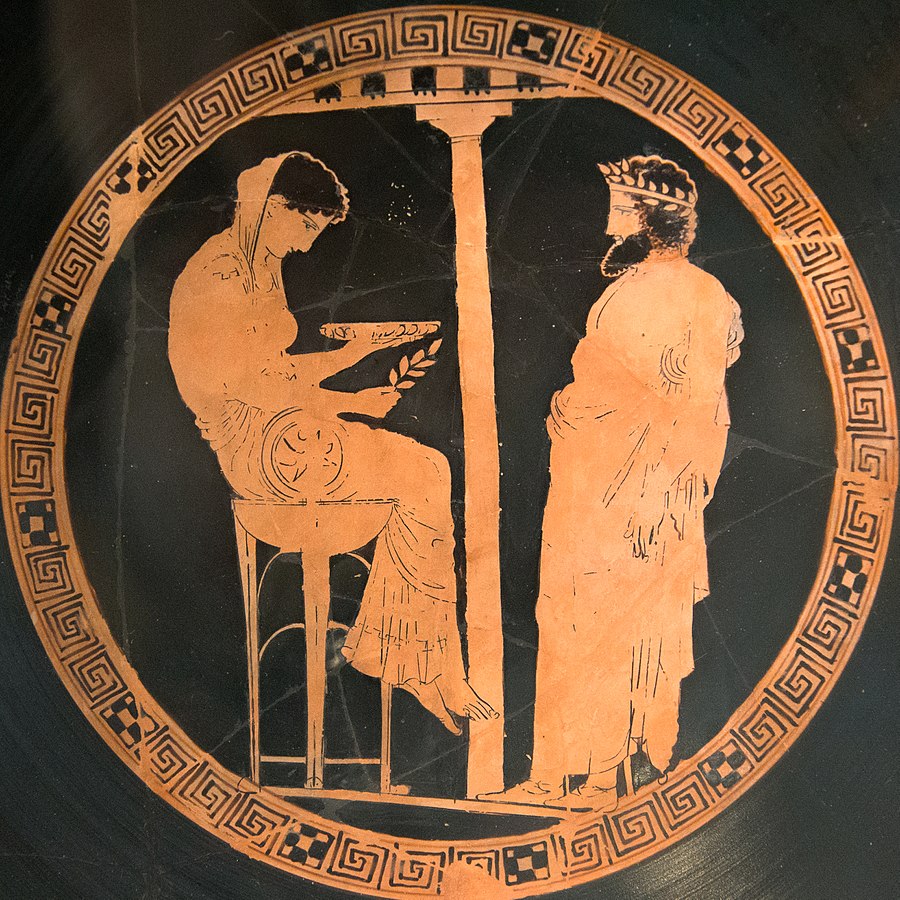
Mythological foundation
The earliest account of the foundation of the oracular site can be found in the Homeric Hymn to Apollo. According to this myth, the god was looking for a place where he could establish his main sanctuary and was directed to Delphi, which was already sacred to Gaia. This significance to the earth goddess was because according to another myth Zeus had sent two eagles flying in opposite directions to find the navel of the Earth (omphalos); as chance would have it, that place was Delphi.
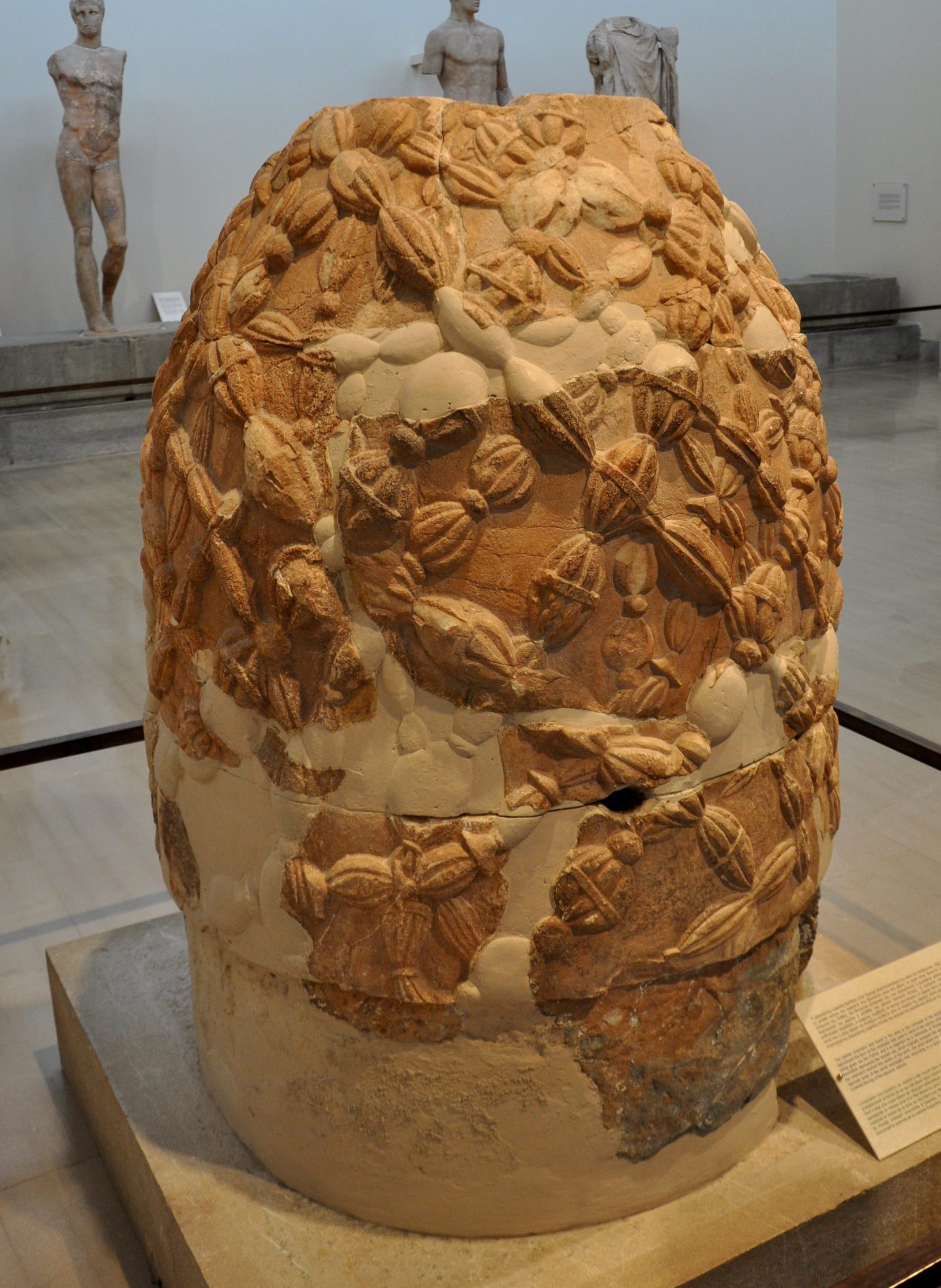
Apollo slayed the giant serpent Python, who was guarding the local spring, and established his own oracular cult as well as games to commemorate his victory. The names of both the high priestess of the sanctuary (the Pythia) and of the games (Pythian Games) were linked to the name of Gaia’s serpent. Apollo then turned into a dolphin and commandeered a ship of Cretan sailors, bringing them to Delphi to become the first priests of his new cult.
For further discussion of Apollo and Delphi, see chapter 12.
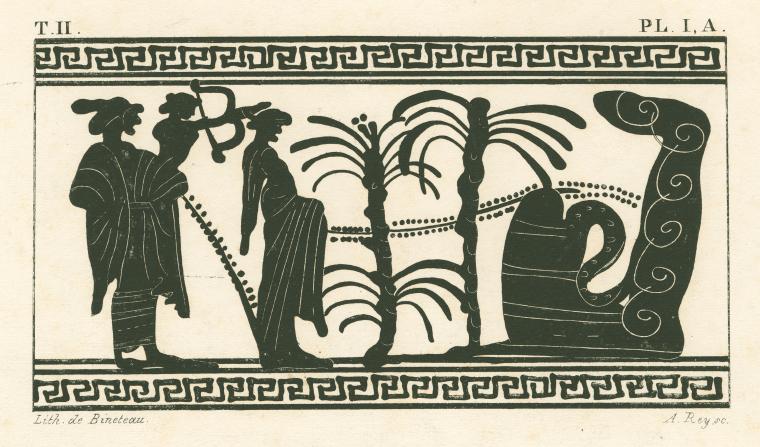
The Oracle of Delphi
Sections & Primary Sources
A Panhellenic Sanctuary
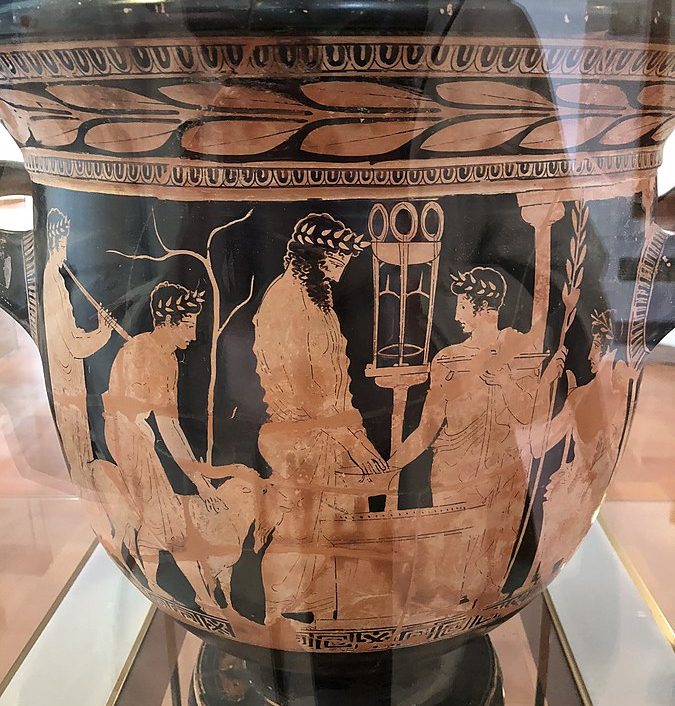
Delphi was the seat of the main oracle of Apollo. The fame and prestige of the sanctuary surpassed all other oracular sites in the Greek world, and emissaries and private citizens from all around the Mediterranean and beyond went to consult the oracle for all sorts of matters of war and peace. As a sacred site, Delphi was a “panhellenic sanctuary.” Panhellenic sanctuaries (such as Delphi, Eleusis, and Olympia) were considered inviolable during war and politically neutral (although they did not always abide by this tradition). City-states and kingdoms alike would send delegations before starting or joining wars, founding new cities, and establishing new cults, but also to ask for counsel in times of famine and plagues. Pilgrims were supposed to pay for the initial consultation; many also dedicated votive offerings to thank the god if their wishes were granted, or after exceptionally positive events such as military or athletic victories.
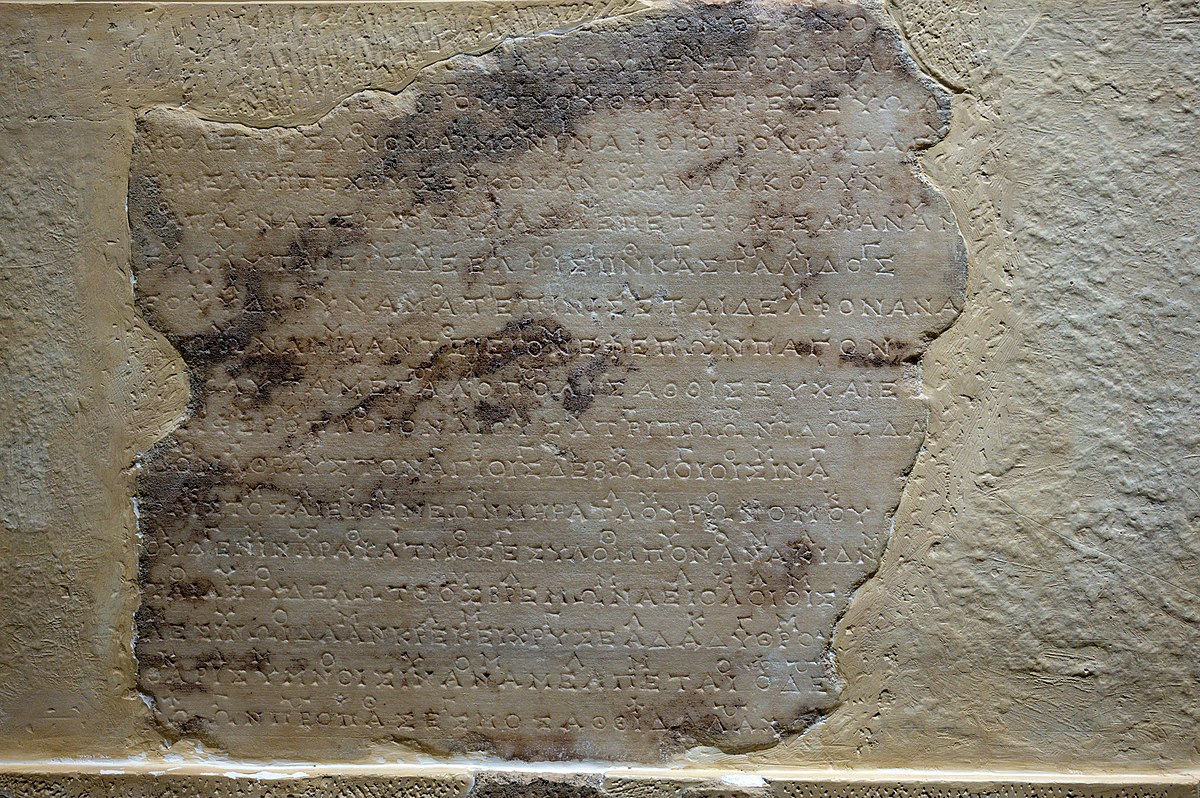
Pausanias, Description of Greece, Book 10 (trans.W. H. S. Jones, adapted by P. Rogak)
Greek geography, 2nd century CE
[10.5.5] From here the high road to Delphi becomes both steeper and more difficult for the walker. Many and different are the stories told about Delphi, and even more so about the oracle of Apollo. For they say that in the earliest times the oracular seat belonged to Earth, who appointed Daphnis, one of the nymphs of the mountain, as prophetess there.
[10.5.6] There is a hexameter poem that is known among the Greeks, the name of which is Eumolpia, and it is assigned to Musaeus, son of Antiophemus. In it, the poet states that the oracle belonged to both Poseidon and Earth; that Earth gave her oracles herself, but Poseidon used Pyrcon as his mouthpiece in giving responses. The verses are these:
“Forthwith the voice of the Earth-goddess uttered a wise word,
And with her Pyrcon, servant of the renowned Earth-shaker.”
([Musaeus], Eumolpia)
They say that afterwards Earth gave her share to Themis, who gave it to Apollo as a gift. It is said that he gave to Poseidon Calaureia, which lies off Troezen, in exchange for his oracle.[1]
[10.5.7] I have heard, too, that shepherds feeding their flocks came upon the oracle, were inspired by the vapor, and prophesied as the mouthpiece of Apollo. The most prevalent view, however, is that Phemonoe was the first prophetess of the god, and first sang in hexameter verse. Boeo, a native woman who composed a hymn for the Delphians, said that the oracle was established for the god by travelers from the Hyperboreans, Olen and others, and that he was the first to prophesy and the first to chant the hexameter oracles.
[10.5.8] The verses of Boeo are:
“Here in truth a mindful oracle was built
By the sons of the Hyperboreans, Pagasus and divine Agyieus.”
(Boeo, work unknown)
After listing others also of the Hyperboreans, at the end of the hymn she names Olen:
“And Olen, who became the first prophet of Phoebus,
And first fashioned a song of ancient verses.”
(Boeo, work unknown)
Tradition, however, reports no other man as prophet, but makes mention of prophetesses only.
[10.5.9] They say that the most ancient temple of Apollo was made of laurel, the branches of which were brought from the laurel in Tempe. This temple must have had the form of a hut. The Delphians say that the second temple was made by bees from bees-wax and feathers, and that it was sent to the Hyperboreans by Apollo.
[10.5.10] Another story is current: that the temple was set up by a Delphian, whose name was Pteras, and so the temple received its name from the builder. After this Pteras, so they say, the city in Crete was named, with the addition of a letter, Apterei. The story that the temple was built of the fern (pteris) that grows on the mountains, by interweaving fresh stalks of it, I do not accept at all.
[10.5.11] It is no wonder that the third temple was made of bronze, seeing that Acrisius made a bedchamber of bronze for his daughter,[2] the Lacedaemonians [Spartans] still possess a sanctuary of Athena of the Bronze House, and the Roman forum, a marvel for its size and style, possesses a roof of bronze.[3] So it would not be unlikely that a temple of bronze was made for Apollo.
[10.5.12] The rest of the story I cannot believe, either that the temple was the work of Hephaestus, or the legend about the golden singers, referred to by Pindar in his verses about this bronze temple:
“Above the pediment sang Golden Charmers.”
(Pindar, work unknown)
These words, it seems to me, are but an imitation of Homer’s account of the Sirens. Neither did I find the accounts agree on the way this temple disappeared. Some say that it fell into a chasm in the earth, others that it was melted by fire.
[10.5.13] The fourth temple was made by Trophonius and Agamedes; the tradition is that it was made of stone. It was burned down in the archonship of Erxicleides at Athens, in the first year of the fifty-eighth Olympiad,[4] when Diognetus of Crotona was victorious. The modern temple was built for the god by the Amphictyons from the sacred treasures, and the architect was one Spintharus of Corinth.
Taken from: https://www.theoi.com/Text/Pausanias10A.html
The Pythia
The person who mediated between Apollo and his worshippers was a priestess called the Pythia. Until the 3rd century BCE she was a young unmarried woman, but after a military officer kidnapped the sitting Pythia, it was decided that from that moment on the office would go to a woman older than fifty years old chosen among the local clergy of Apollo. The god residing in the sanctuary and giving answers was thought to be Apollo for the first nine months of the year; during the last three, he would leave Delphi to retire among the Hyperboreans, and Dionysus was left in charge of the place.
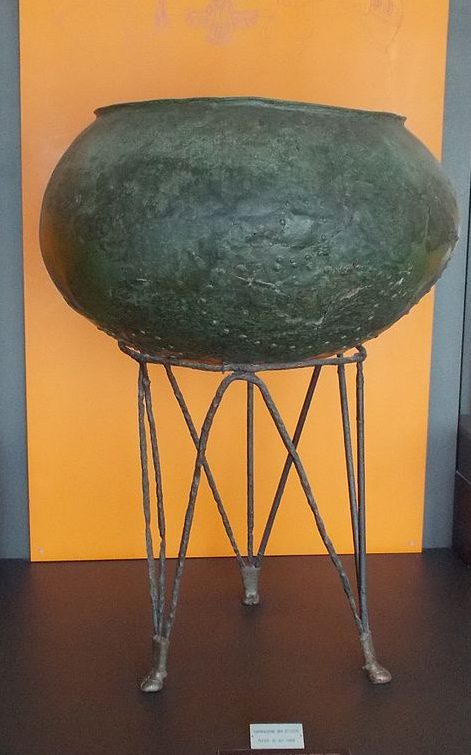
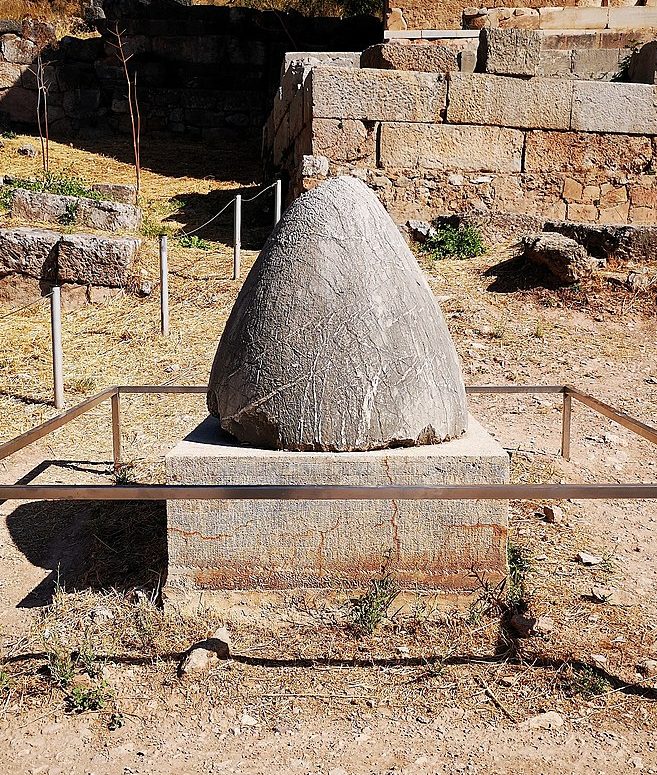
The Pythia would purify herself on the seventh day of the month, which was sacred to Apollo. If the results of a sacrifice were favourable, she would then take her seat on the sacred tripod next to the stone symbolizing the omphalos, and receive the pilgrims. She listened to their questions from the adyton, the most sacred part of the temple in which she communicated with the god. The responses were notoriously cryptic and ambiguous, and the Pythia would deliver them in a state of trance induced by the presence of Apollo. It has long been suggested (although never definitely proven) that the altered mental and physical state of the priestess was due to the use of psychotropic substances, such as the smoke from oleander leaves being burned on a brazier located in an underground chamber, or to fumes containing ethylene or other natural hallucinogenic gases coming out from the chasm over which the adyton was built.
Plutarch, Moralia, De Defectu Oraculorum (trans. F. C. Babbitt, adapted by P. Rogak)
Greek essay, 2nd century CE
[42] It is not, therefore, anything to be amazed by if, although the earth sends up many streams, it is only such as these [at Delphi] that give souls inspiration and impressions of the future. Certainly the voice of legend also agrees with my statement; for they record that here the power hovering about this spot was first made apparent when a certain shepherd fell in by accident and later said inspired things, which those who came into contact with him at first treated with disdain; but later, when what he had foretold came to pass, they were amazed. The most wise of the people of Delphi still preserve the tradition of his name, which they say was Coretas. But I tend most towards the opinion that the soul has a close and intimate connection with prophecy, like the connection between vision and light, which possesses similar properties. Because, although the eye has the power of vision, there is no function for it to perform without light; and so the prophetic power of the soul, like an eye, needs something kindred to help to kindle it and stimulate it further. For this reason, many among earlier generations regarded Apollo and the Sun as one and the same god; but those who understood and respected fair and wise analogy conjectured that as body is to soul, vision to intellect, and light to truth, so is the power of the sun to the nature of Apollo; and they would make it appear that the sun is his offspring and progeny, being forever born of him that is forever. For the sun kindles and promotes and helps to keep in activity the power of vision in our perceptive sense, just as the god does for the power of prophecy in the soul.
Taken from: https://penelope.uchicago.edu/Thayer/E/Roman/Texts/Plutarch/Moralia/De_defectu_oraculorum*.html
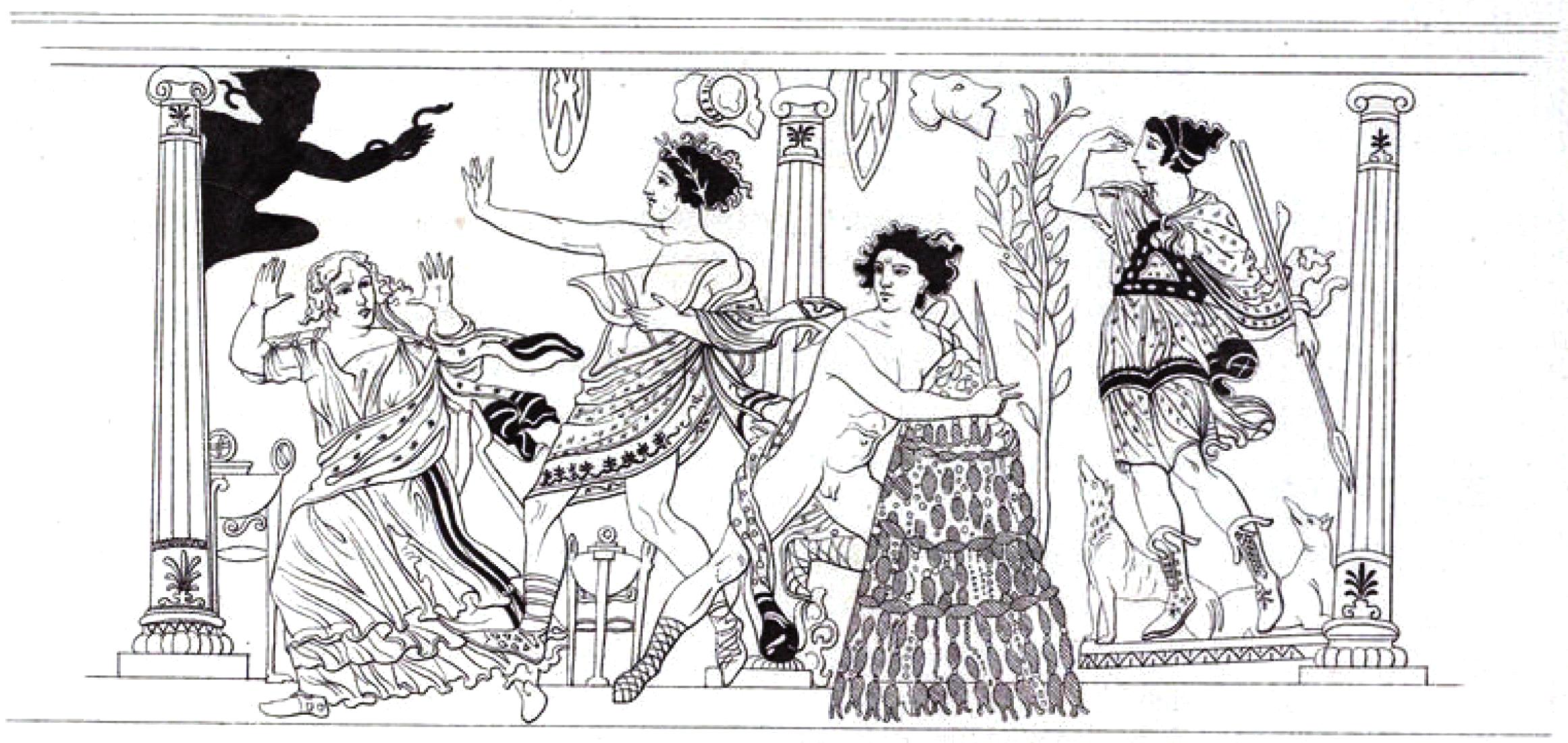
The Pythian Games
The Pythian Games were one of the four Panhellenic Games of Ancient Greece alongside the Olympic, Nemean, and Isthmian Games. From the second half of the 6th century BCE they were held in honour of Apollo at Delphi every four years, in the summer of the second year after the Olympic Games.
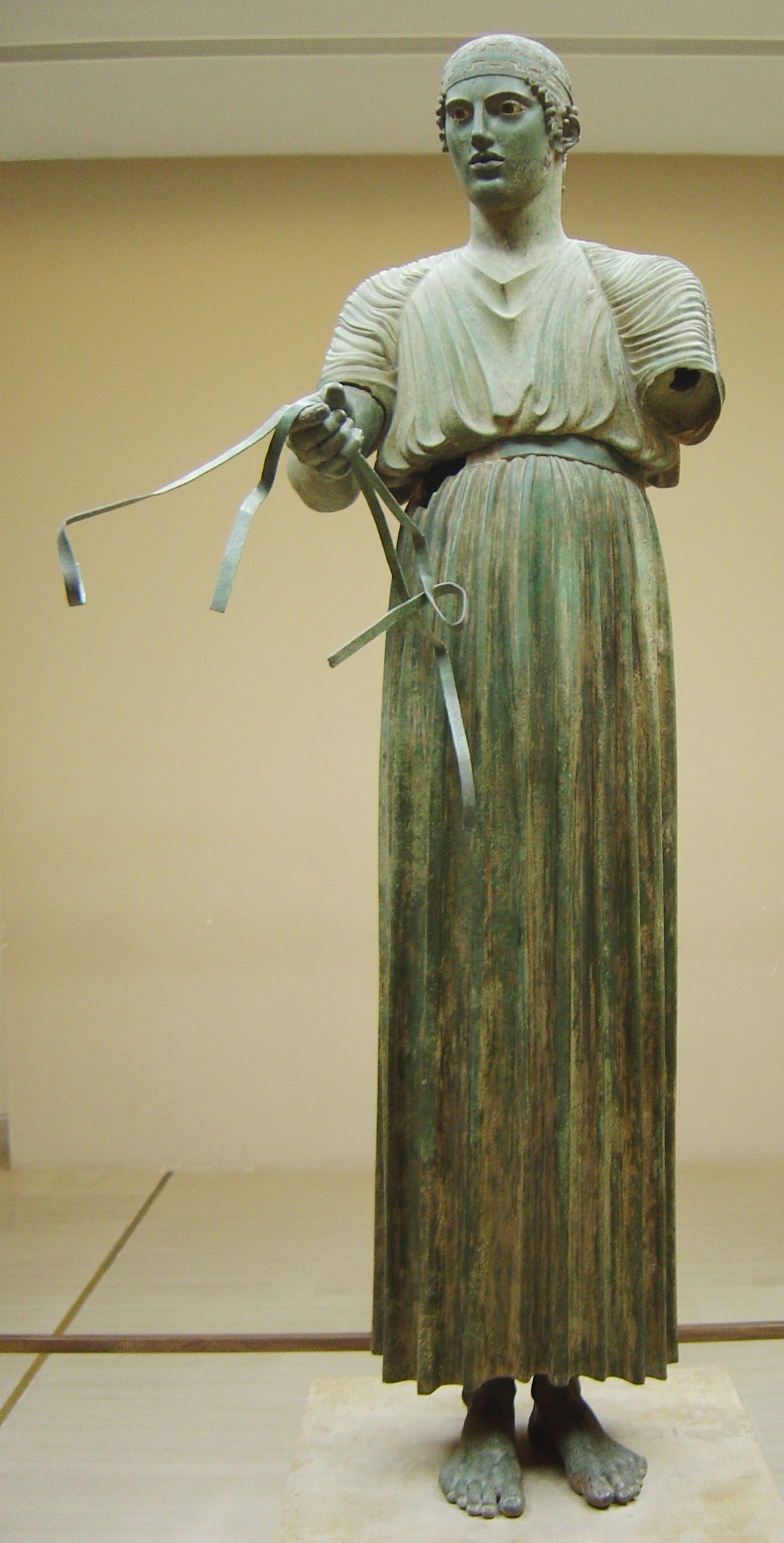
The first day of the festival was dedicated to religious ceremonies to ensure the favour of the god; the other four days featured competitions of art, dance, athletics, and horse racing. All male Greek citizens could participate, and women were allowed to compete in certain events. The prize for the winning athletes was a laurel wreath made of branches from the sacred trees from the sanctuary of Apollo in Tempe, Thessaly.
Archaeology
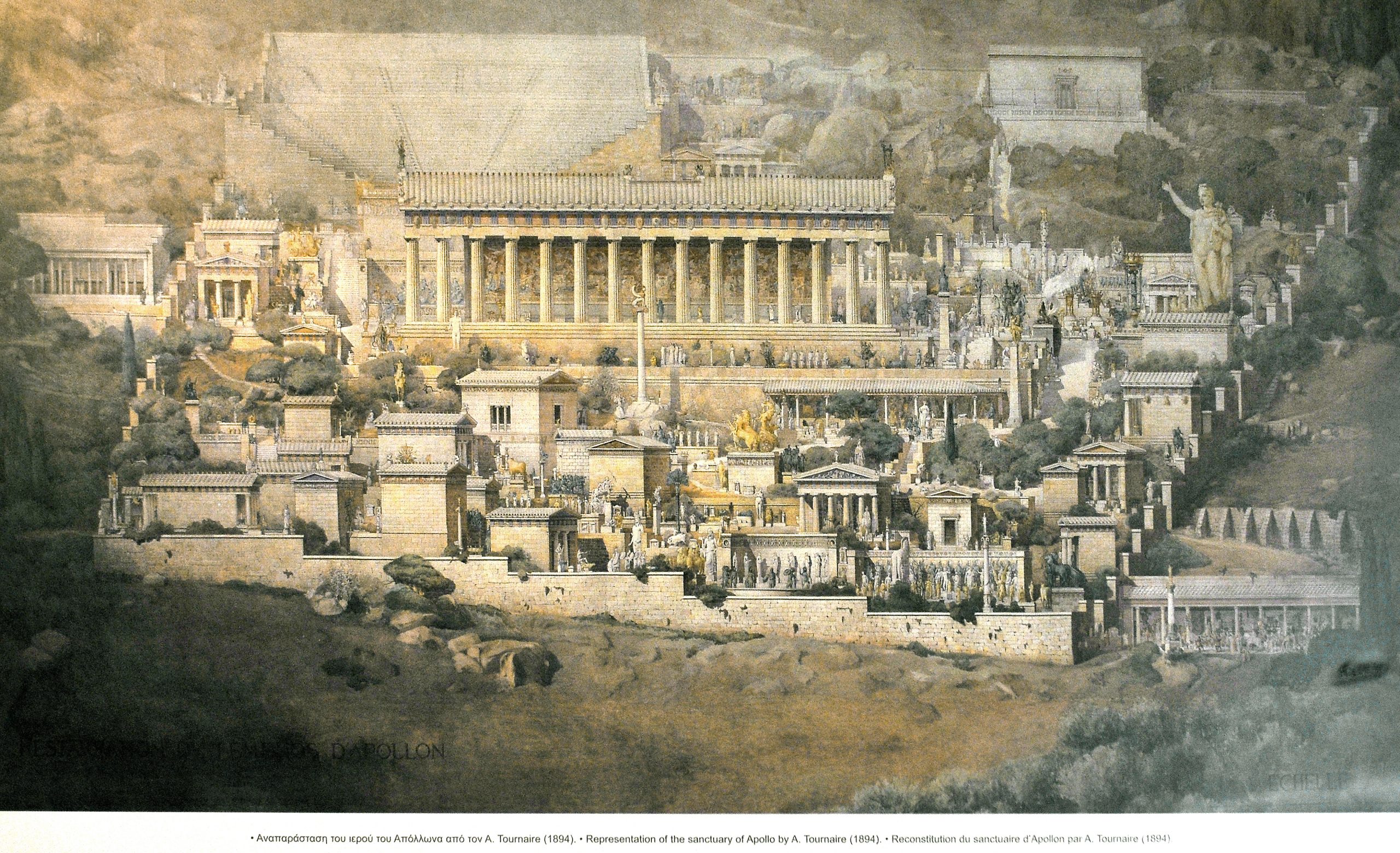
The site of Delphi had been inhabited at least since the late 14th century BCE. The first traces of a sacred place dedicated to Gaia date from the 8th century BCE, while the cult of Apollo seems to have taken over during the following century, when the sanctuary was formally established.
Delphi was managed until the 2nd century CE by a sacred council of representatives of several city-states called the Delphic Amphictyonic League. However, although founded as a neutral institution, the leadership of the league was taken over by different city-states on several occasions, resulting in power struggles and three wars for the control of the sanctuary – which was often damaged or sacked as a consequence.
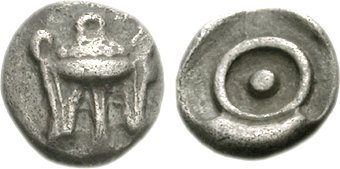
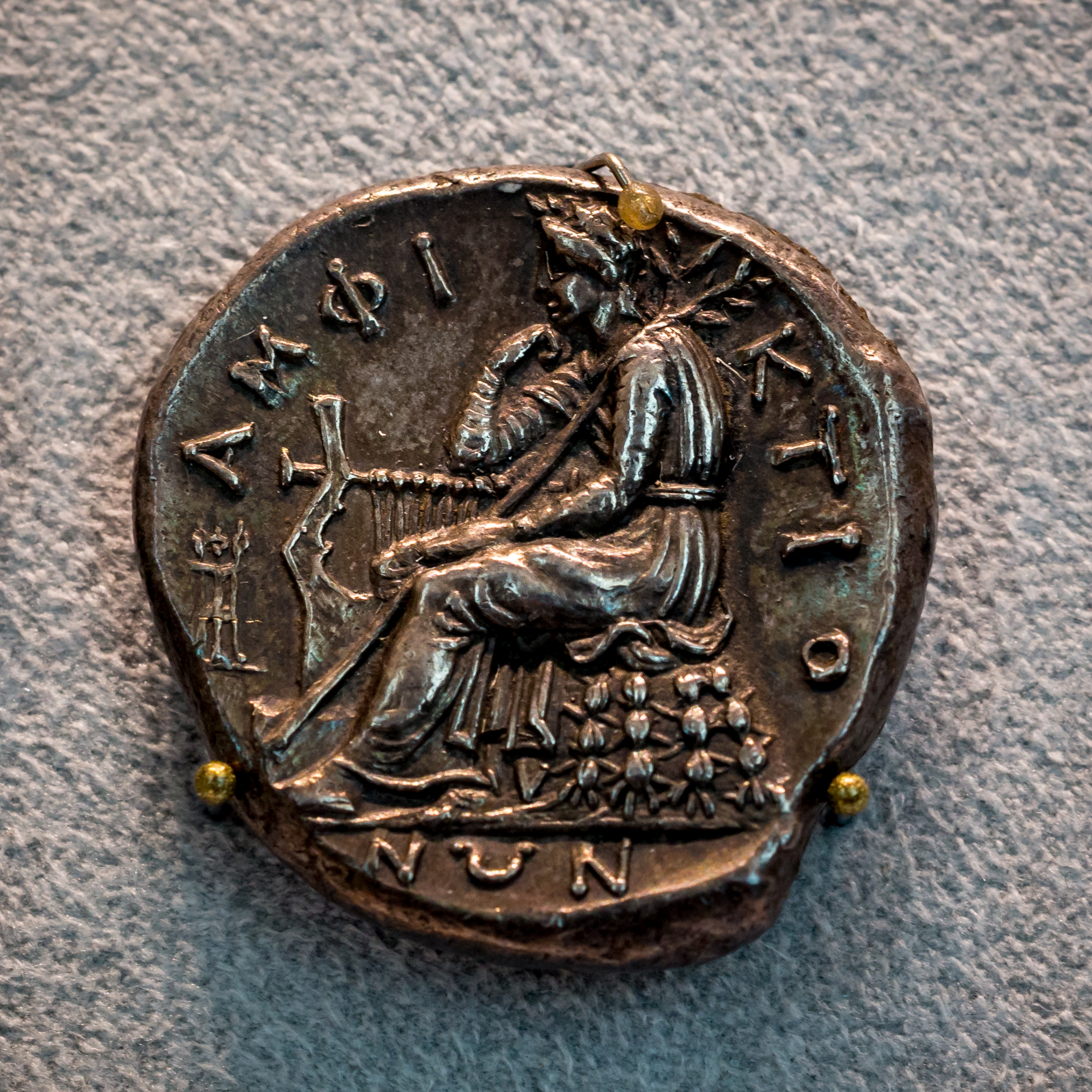
The site was damaged, rebuilt, and expanded several times during its long history, which spanned from the 7th century BCE to the 4th century CE when the Roman emperor Theodosius outlawed all pagan cults and decreed all temples be closed. Most of the remains still visible to this day date from the Classical, Hellenistic, and Roman periods.


The site extends beyond the limits of the sanctuary itself, although this was the center of the cult. The first precinct pilgrims would meet was that of Athena Pronaia (Athena ‘in front of the temple’), just to the southeast of the entrance. Moving forwards towards the sanctuary, the next stop would be the Castalia Spring, where pilgrims had to ritually purify themselves with the sacred waters before accessing the precinct of Apollo.
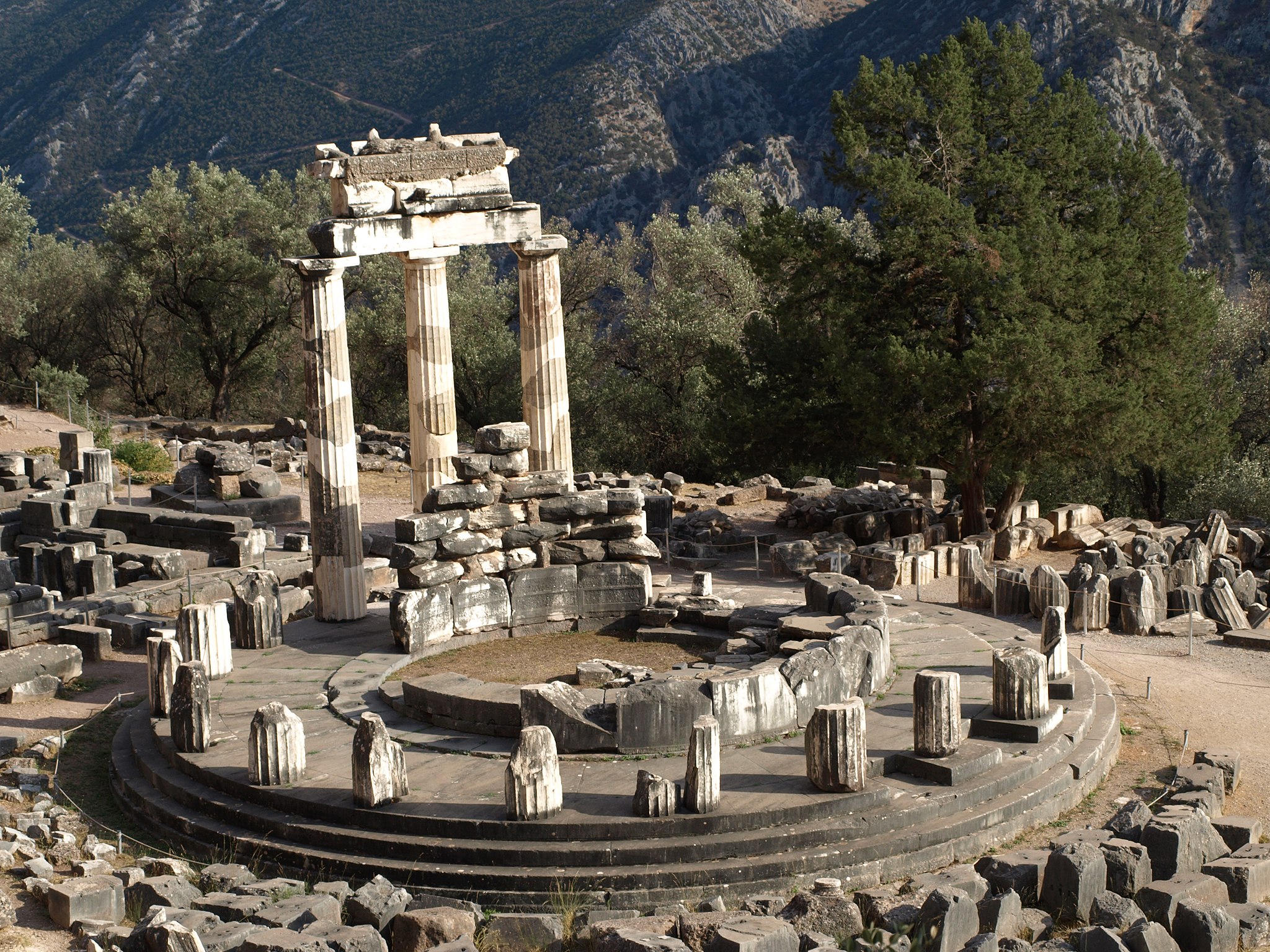
The main entrance to the sanctuary was on the southeastern corner. From there, the sacred way wound uphill; along its sides were dedications from cities and private citizens alike. These could take all sorts of shapes: sculptures in stone and metal, columns, altars, inscriptions, and buildings. Several poleis used a tenth of the spoils won in important battles to build small structures shaped like prostyle temples, the so-called treasuries, in which they would also store other votive offerings. A point of particular interest along the sacred way was the Siybil rock, the boulder from which the first priestess of Apollo allegedly sat to deliver responses when the cult was first instituted.
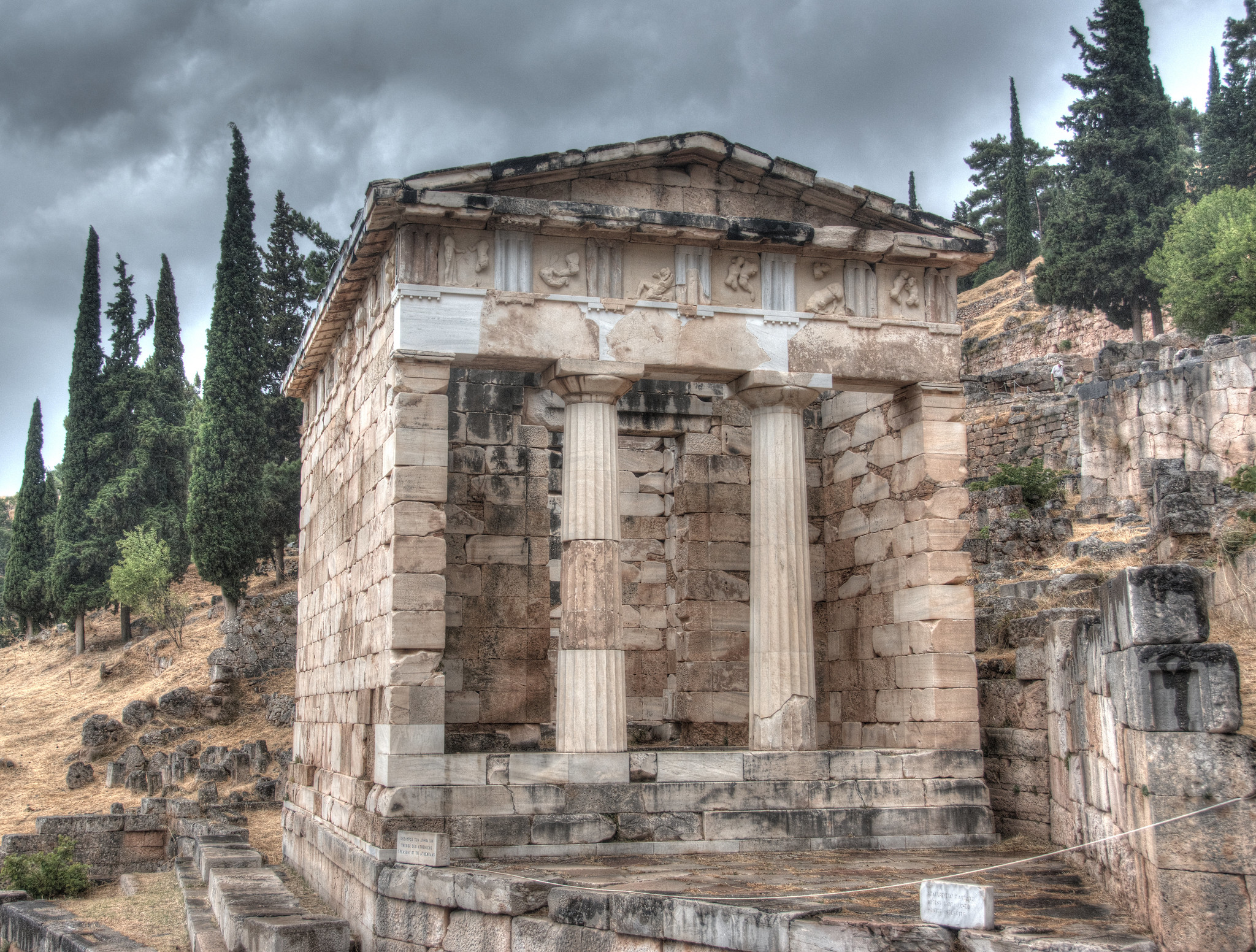
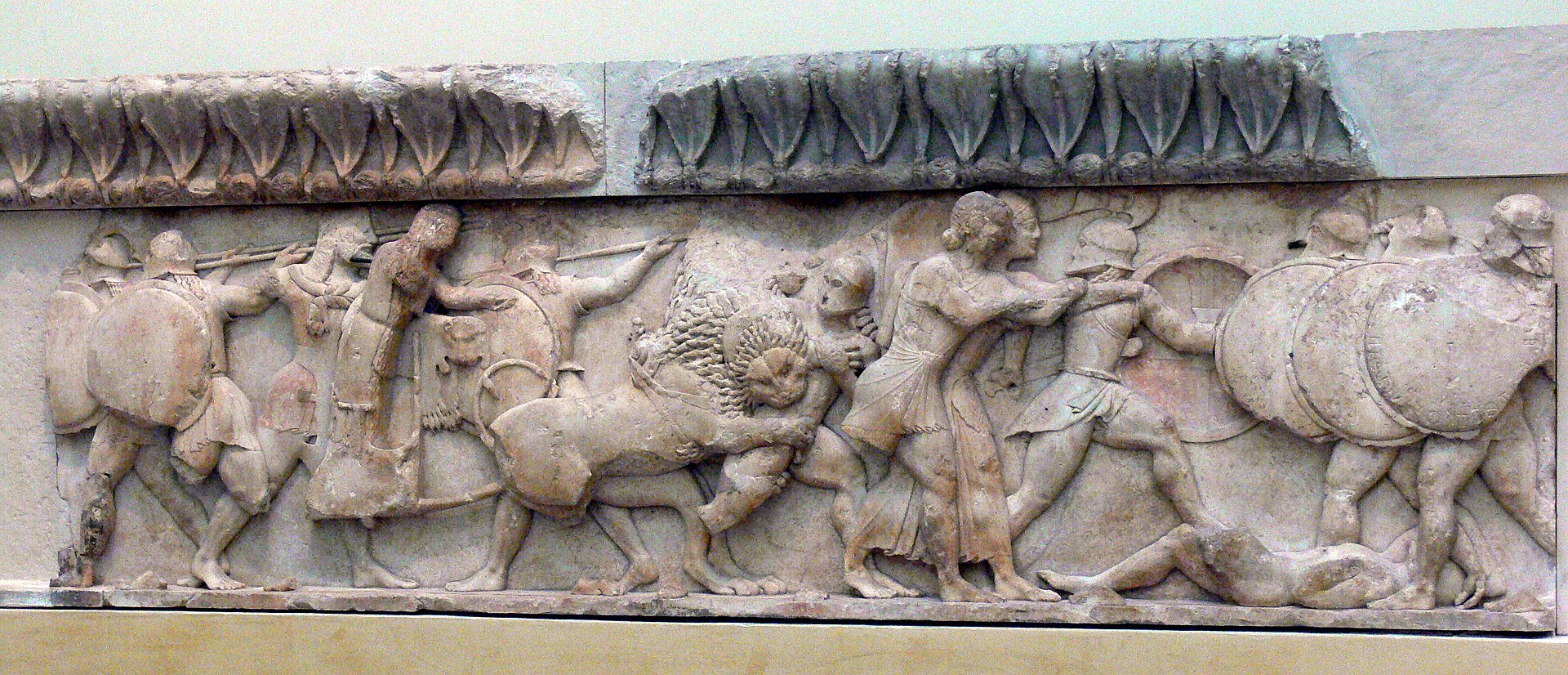
The center of the sanctuary was the temple of Apollo, which signalled the end of the sacred way. In front of it was a large altar made almost entirely of black marble donated by the citizens of Chios. Above the temple were more treasuries and buildings, and in the northwestern corner of the sacred precinct was the theatre, first built in stone in the 4th century BCE.
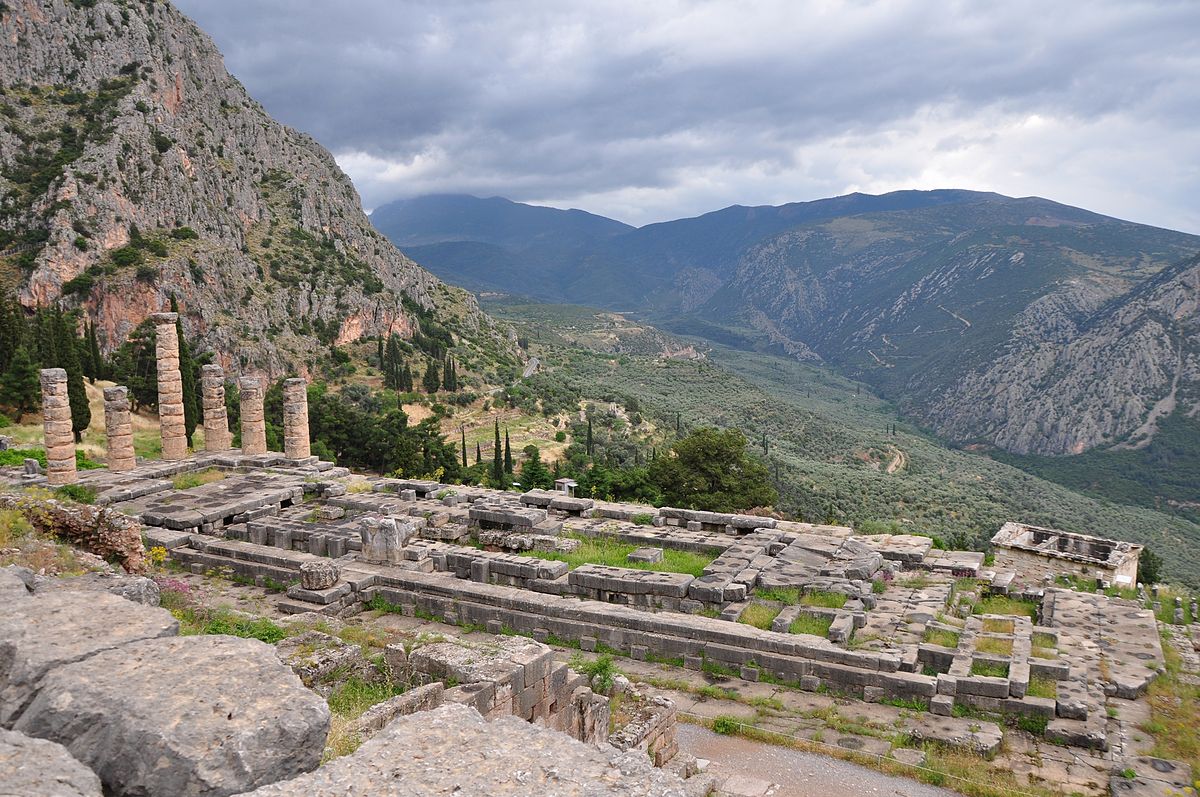
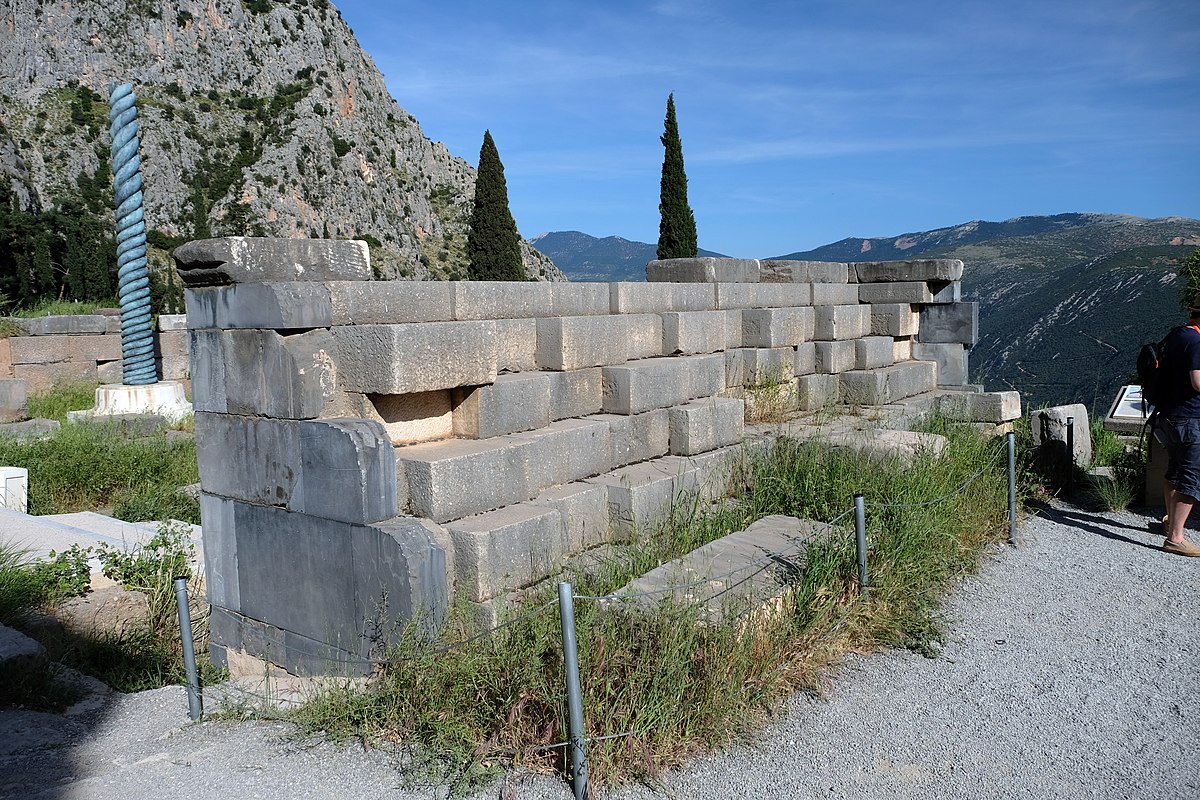
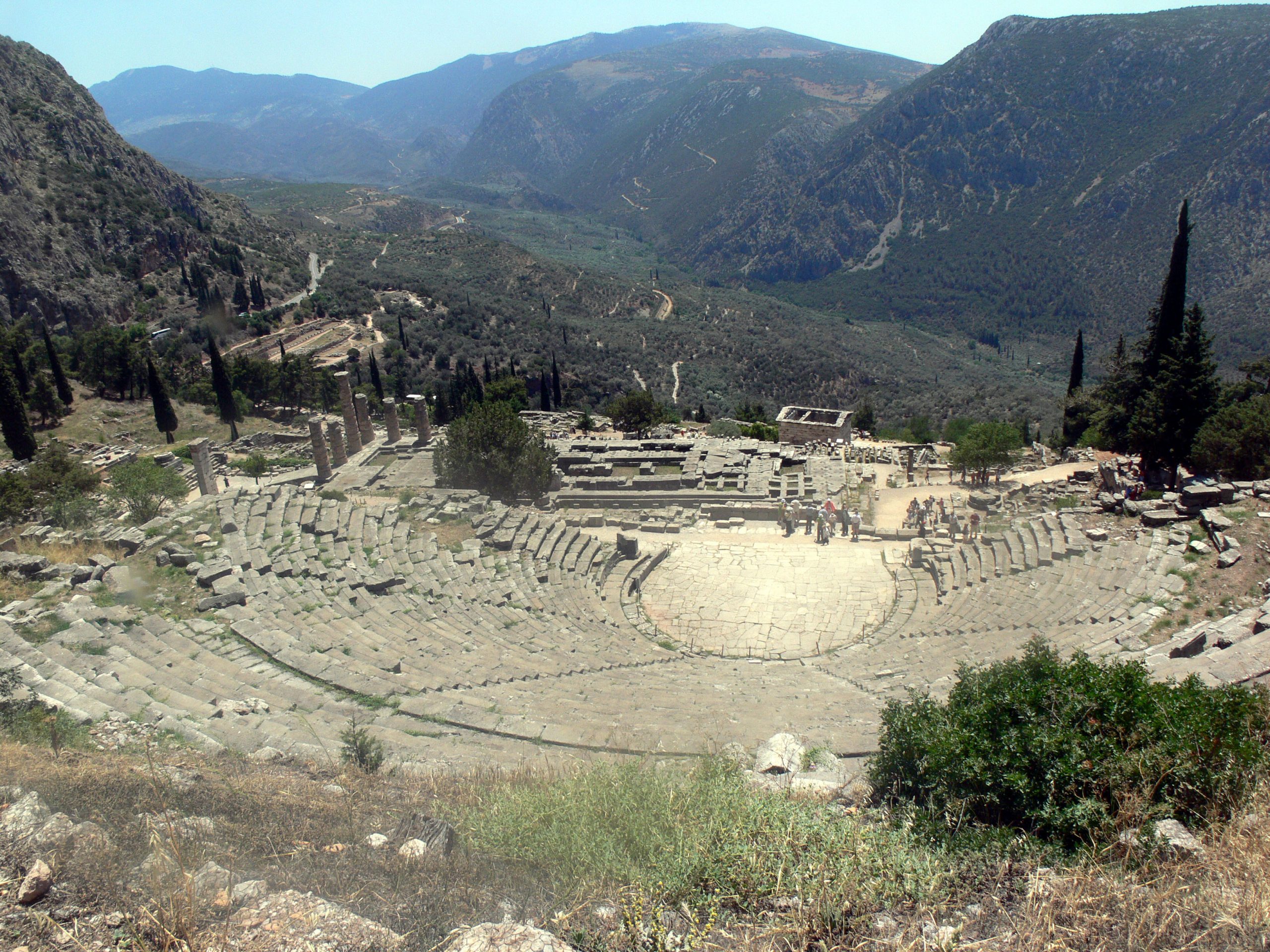
Even higher on the hill but outside of the sanctuary walls was a large stadium built in the 4th century BCE to host some of the athletic competitions of the Pythian Games. An earlier stadium may have been located downhill from the sanctuary, in the plain of Krisa, alongside a hippodrome.
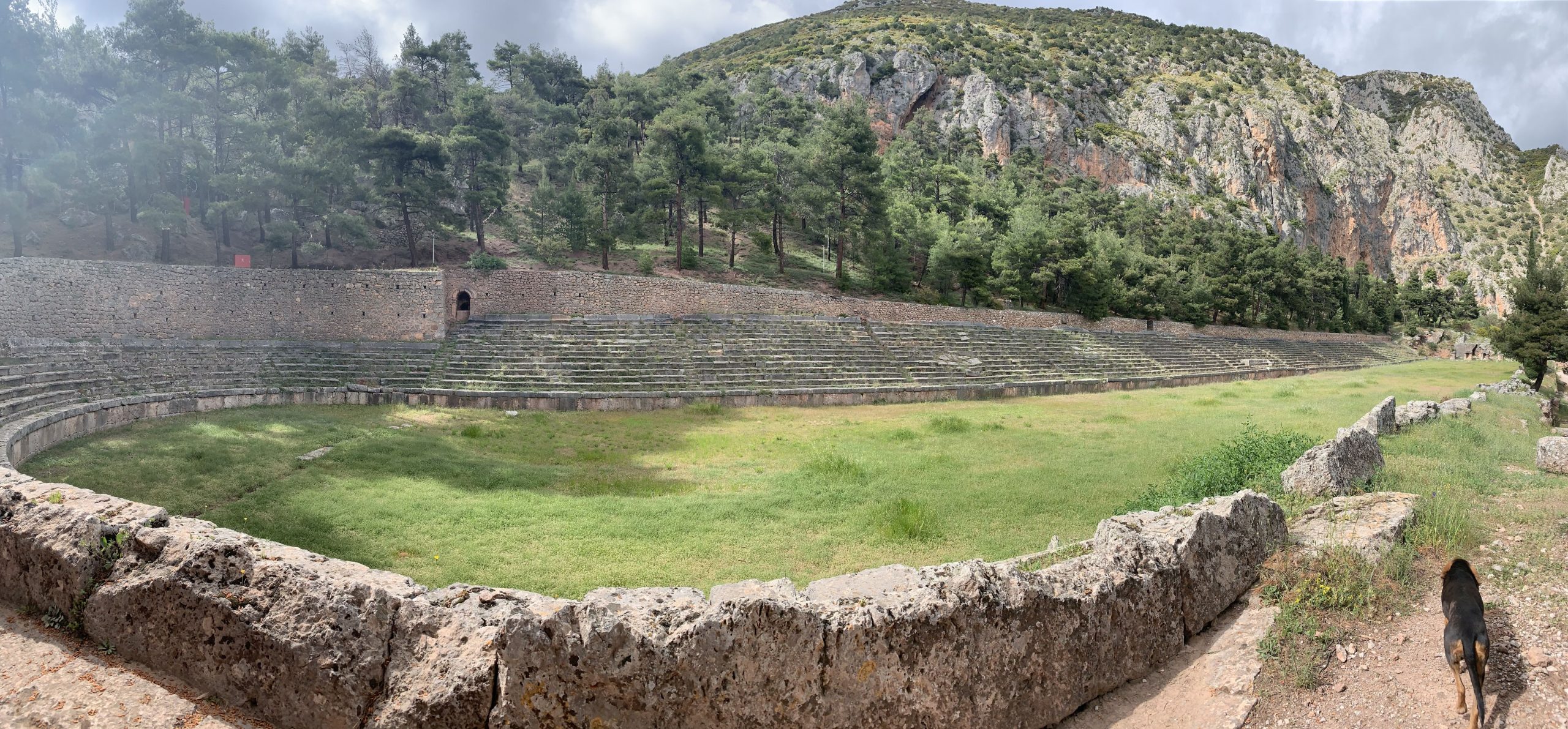
Media Attributions and Footnotes
Media Attributions
- Oracle of Delphi, red-figure kylix, 440-430 BC, Kodros Painter, Berlin F 2538, 141668 © Zde is licensed under a CC BY-SA (Attribution ShareAlike) license
- Delphi omphalos © Helen Simonsson is licensed under a CC BY-SA (Attribution ShareAlike) license
- Apollo, held by Leto, shoots at Python in a landscape with palm trees is licensed under a Public Domain license
- Scène sacrificielle © Codex is licensed under a CC BY-SA (Attribution ShareAlike) license
- Delphic hymns to Apollo, 128 BC, inscription in AM of Delphi, 201388 © Zde is licensed under a CC BY-SA (Attribution ShareAlike) license
- https://commons.wikimedia.org/wiki/File:Delphi_Museum_Delphic_Tripod_1.jpg © Odysses is licensed under a CC BY-SA (Attribution ShareAlike) license
- Pupek, Delfy © Ondřej Žváček is licensed under a CC BY (Attribution) license
- Black Fury painter’s Orestes crater – Naples, Museo Archeologico Nazionale © Karl Bötticher is licensed under a Public Domain license
- Delphi charioteer front DSC06255 © David Monniaux is licensed under a CC BY-SA (Attribution ShareAlike) license
- Delfos, museo 01 © Albert Tournaire is licensed under a Public Domain license
- Delphi-01 © the Classical Numismatic Group is licensed under a CC BY-SA (Attribution ShareAlike) license
- Delphi – 336-334 BC – silver stater – head of Demeter – Apollon sitting in his sanctuary – Berlin MK AM © ArchaiOptix is licensed under a CC BY-SA (Attribution ShareAlike) license
- Plan Delphi Sanctuary of Apollo colored © Tomisti is licensed under a CC BY-SA (Attribution ShareAlike) license
- Plan Delphi full © Tomisti is licensed under a CC BY-SA (Attribution ShareAlike) license
- Tholos Athena Pronaia © Mr. Checker is licensed under a CC BY-SA (Attribution ShareAlike) license
- Athenian Treasury – Θησαυρός των Αθηναίων © CocoaBiscuit is licensed under a CC BY-NC-ND (Attribution NonCommercial NoDerivatives) license
- 07Delphi Fries01 (cropped) © Fingalo is licensed under a CC BY-SA (Attribution ShareAlike) license
- Delfi Apollons tempel © Helen Simonsson is licensed under a CC BY-SA (Attribution ShareAlike) license
- Altar of apollo 03 © Davide Mauro is licensed under a CC BY-SA (Attribution ShareAlike) license
- 07Delphi Theater03 © Fingalo is licensed under a CC BY-SA (Attribution ShareAlike) license
- Ancient stadium at Delphi, Greece © Milo44 is licensed under a Public Domain license
- Calaureia, an island off the coast of Troezen, was known for its Archaic temple to Poseidon. ↵
- Acrisius locked his daughter, Danae, in a room to prevent her from having a child. See chapter 22. ↵
- Athena had an epithet Khalkioikon, meaning "lady of the bronze house." Notably, there was a bronze temple to Athena in Sparta. ↵
- The Olympic games took place every four years, and the four year period between each games was called an “Olympiad”. The fifty-eighth Olympiad is therefore approximately 238 years after the first Olympic games (in 786 BCE). ↵
God of medicine, archery, oracles, and the sun.
See chapter 12.
Greek: Gaia
Roman: Terra
Goddess of the earth.
Featured in chapter 1.
Minor nature deities.
Greek: Poseidon
Roman: Neptune
God of the sea.
See chapter 7.
Epithet for Poseidon (see chapter 7).
Titan of justice and order.
Featured in chapter 3.
A mythical people who lived in the north, often associated with Apollo.
Appear in chapter 21.
Epithet for Apollo (see chapter 12), meaning "bright one."
A king of Argos and father of Danae. Known for casting Danae and baby Perseus out to sea because of a prophecy that Perseus would kill him.
Featured in chapter 21.
Greek: Athena
Roman: Minerva
Goddess of warfare, wisdom, and craft.
See chapter 9.
Greek: Hephaestus
Roman: Vulcan
God of fire, smiths, and craftspeople.
See chapter 8.
Half-woman, half-bird creatures who would lure sailors to their deaths with their song.
Featured in chapter 19 and chapter 40. Also appear in chapter 41.
A city in the region of Attica. Associated with Athena, Theseus, and Cecrops. Site of the Acropolis, Parthenon, and Agora.
See chapter 36.

